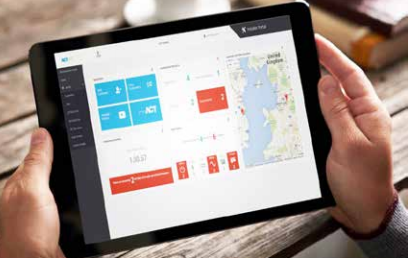The most common vertical markets that immediately come to mind when security is thought about are the areas such as retail, education, hospitality and banking. However there are also less common, more complicated environments that demand just as much attention as remote workplaces.
The more conventional facilities such as stores, schools and banks, typically possess robust resources on site to operate their security systems. But what happens when an organization needs to secure a facility or group of people in an offshore or rural location? Remote workplaces present unique challenges when it comes to implementing and maintaining a security solution, but today’s innovative technology can help.
The cloud
 One of the most beneficial features of the cloud is that it enables users to stay connected at all times, which is especially important for remote workplaces where constant communication is necessary but takes place between great distances. And because these entities have a tendency to lack a large IT department, the cloud is ideal as it allows security teams to shift the maintenance and storage of data to an integrator. For example, at a small, rural healthcare facility where security technology is limited, security personnel can ensure both facility protection and patient data privacy through the use of cloud-based services.
One of the most beneficial features of the cloud is that it enables users to stay connected at all times, which is especially important for remote workplaces where constant communication is necessary but takes place between great distances. And because these entities have a tendency to lack a large IT department, the cloud is ideal as it allows security teams to shift the maintenance and storage of data to an integrator. For example, at a small, rural healthcare facility where security technology is limited, security personnel can ensure both facility protection and patient data privacy through the use of cloud-based services.
Remote monitoring
 Another benefit of the cloud is the ability to monitor activity and alarms from any location and at any time. This is particularly paramount for workplaces that are difficult or take a significant amount of time to access. In the event of an incident, security personnel can be alerted immediately via their smartphone, facilitating a quick and efficient response. Security solutions that specialize in remote monitoring make it easy for security personnel in rural areas to save time and money while ensuring the safety of people within the facility
Another benefit of the cloud is the ability to monitor activity and alarms from any location and at any time. This is particularly paramount for workplaces that are difficult or take a significant amount of time to access. In the event of an incident, security personnel can be alerted immediately via their smartphone, facilitating a quick and efficient response. Security solutions that specialize in remote monitoring make it easy for security personnel in rural areas to save time and money while ensuring the safety of people within the facility
Access control and intrusion systems
Gone are the days where physically securing a building requires personnel on site to manually lock the doors. The latest intelligent access control and intrusion technology that leverages the cloud and remote monitoring makes security simple for remote workplaces. Vanderbilt’s ACT365, for example, enables remote site managers complete control to control access and view video from any location and centrally report any vulnerabilities or updates. Vanderbilt’s SPC Connect, designed for installers to monitor, manage and maintain SPC panels remotely from any location using internet access, allows installers to offer a support service for clients without the need to physically visit the site.
The increasing security threats that organizations face on a daily basis demand that comprehensive solutions are in place to identify risks before it’s too late – and this goes for facilities of all kinds. Remote workplaces face a unique challenge in that they can be tricky to access, but the good news is that the cloud has opened the door to new possibilities for these locations. By connecting access control and intrusion systems to offshore or rural environments, users can take advantage of remote monitoring and enhanced communication, which leads to improved safety and overall operations.
![]()